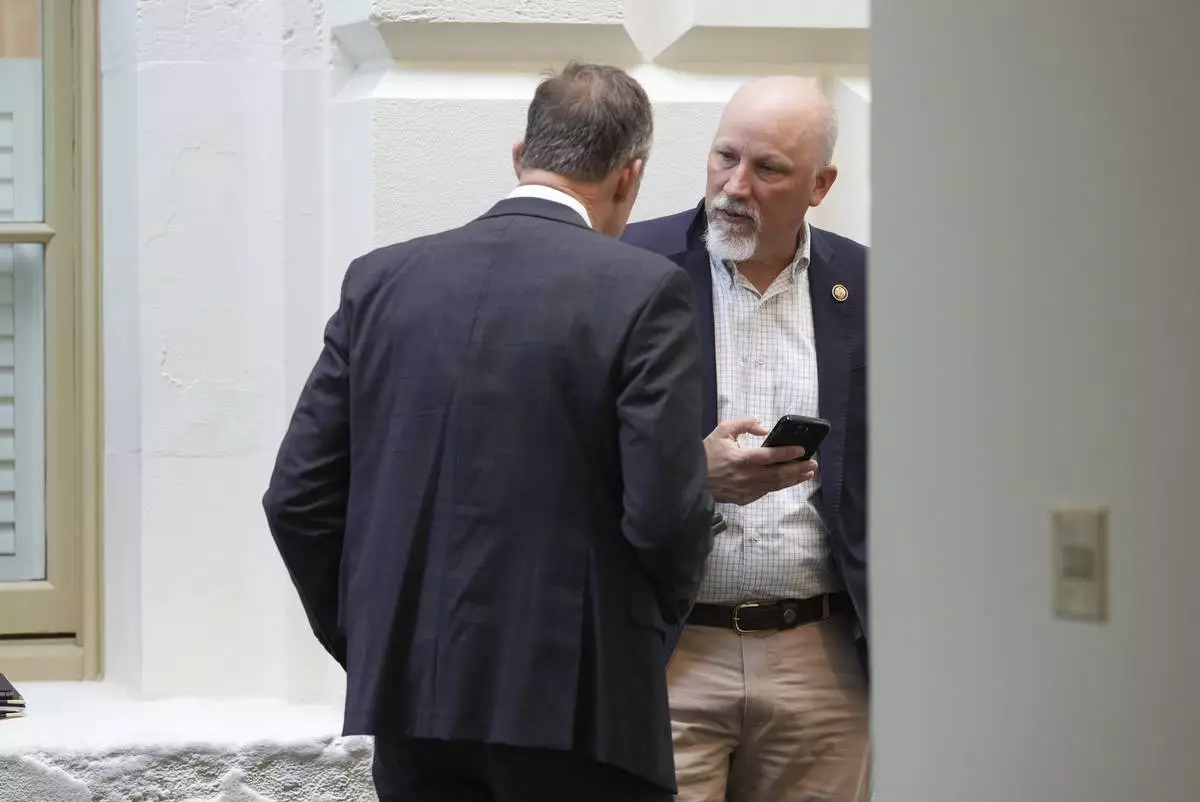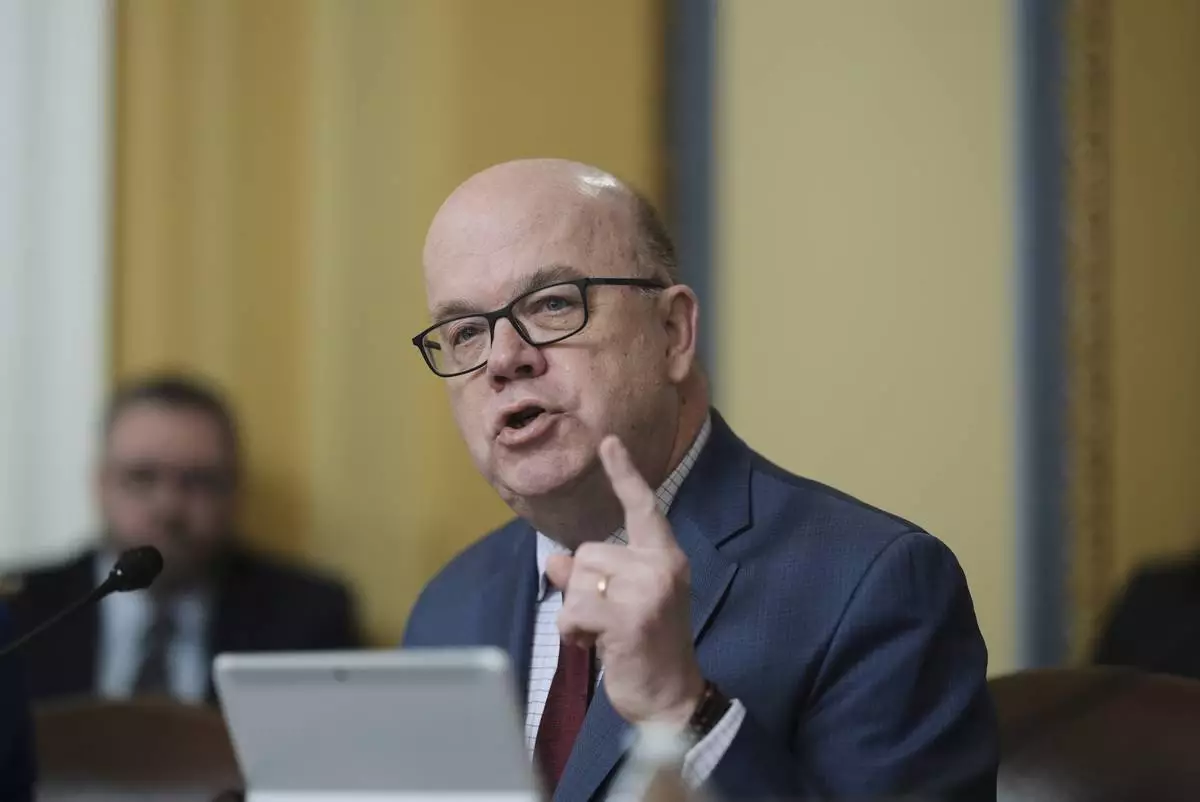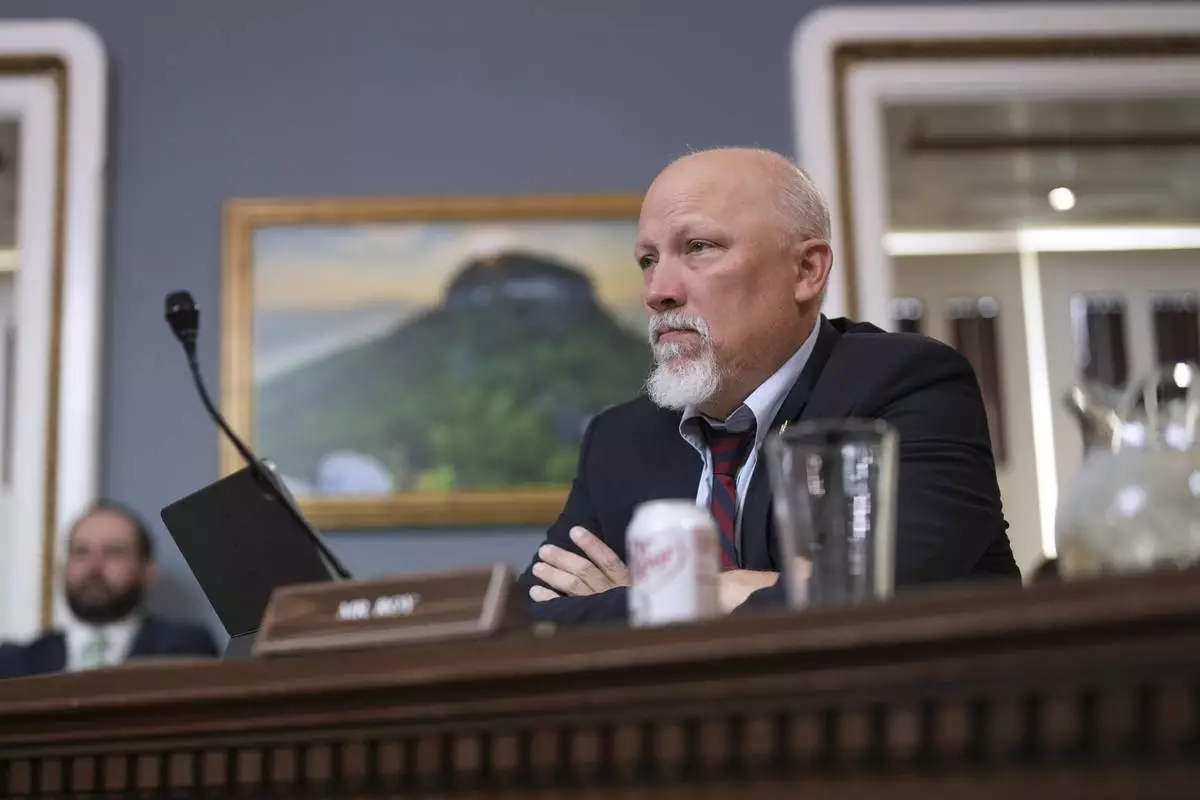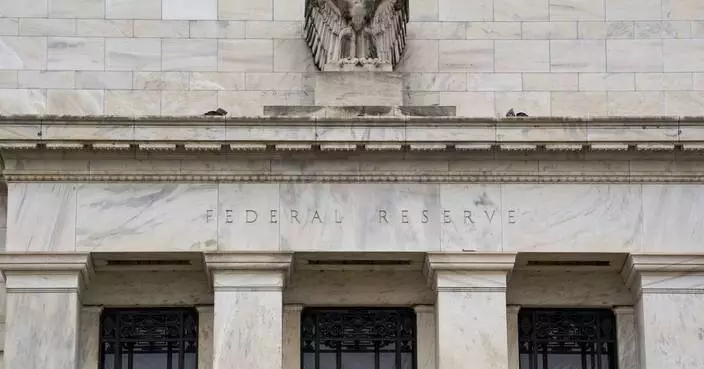BANGKOK (AP) — The trade war that U.S. President Donald Trump has escalated in his second term is a challenge for all Asian economies, large and small, in an era when the most populous region of the world is expected to drive global economic growth.
Export manufacturing and free trade helped transform China and other Asian countries into economic powerhouses over the past decades. Trump’s barrages of tariffs, aimed at compelling companies to keep or set up their factories in the United States, are rupturing trade agreements often made at great political cost to trading partners.
The White House says the criteria for raising tariffs will include not just U.S. trade deficits but also various taxes, exchange rates, government subsidies and various non-tariff trade barriers. Apart from the tariffs to be announced on Wednesday's “Liberation Day,” as Trump calls it, 25% tariffs on imports of autos and auto parts are due to take effect on Thursday.
Trump has also ordered levies against China, Canada and Mexico; expanded tariffs on steel and aluminum, and imposed tariffs on countries that import oil from Venezuela. He plans more import taxes on pharmaceutical drugs, lumber, copper and computer chips.
Higher costs already have led many manufacturers to shift away from China to other economies in South and Southeast Asia, Africa and Latin America. But for now the prevailing uncertainty over what Trump will do with what he calls “reciprocal” tariffs may lead most to sit tight and see what comes next.
“There’s no script for how reciprocal tariffs get priced, and uncertainty is the only constant,” Stephen Innes of SPI Asset Management said.
Here's a look at how higher U.S. tariffs might affect some major Asian economies.
Despite some decrease in trade since Trump launched a trade war with China during his first term in office, the U.S. trade deficit has continued to climb, hitting $295.4 billion last year.
China, the world's No. 2 economy, has leaned heavily on exports to make up for weak demand at home. The ruling Communist Party has made exports of autos, especially electric vehicles, and batteries a priority, but 27.5% tariffs on auto exports and 102.5% duties on EVs have in effect closed the U.S. market for its automakers. China is the second largest supplier of auto parts to the U.S. behind Mexico.
During Trump's first term, higher tariffs led leader Xi Jinping to champion a shift to high-tech production. That will likely continue as U.S. pressure intensifies, causing job losses due to changes in manufacturing rather than direct damage from the tariffs themselves, Raymond Yeung of ANZ Research said in a report.
As Trump has rolled out rounds of tariff hikes that have piled on an extra 20%, China has raised its own import duties, targeting U.S. farm goods. It also expanded export controls, especially on strategically important minerals used in high-tech electronics.
U.S. exports of liquefied natural gas (LNG) to China have fallen since the beginning of the year, and are expected to fall further after Beijing imposed a 15% tariff on U.S. LNG imports.
Prime Minister Shigeru Ishiba said Tuesday that his government was making last ditch efforts to get the United States to exclude his country from auto tariffs. The U.S. absorbs about one-fifth of Japan's exports, or about 1.5 million passenger cars a year.
Even though major Japanese automakers like Toyota Motor Corp., Honda Motor Co. and Nissan Motor Co. have factories in the U.S. and increasingly, in Mexico, it's an important industry back home. Nearly 5.6 million people are employed in auto-related jobs, according to the Japan Automobile Manufacturing Association.
Japan's exports of electronics, machinery, chemicals and steel are also potential targets. A central bank survey released Monday found business sentiment among large manufacturers worsened in the past quarter, for the first time in a year. Tokyo's Nikkei 225 share benchmark has fallen more than 10% in the past three months, while shares in Toyota Motor Corp. have tumbled 27%.
More than 60% of the self-governed island's economy comes from exports, and it ran a trade surplus with the U.S. of nearly $74 billion last year. Computer chips are one of Taiwan's biggest exports to the United States, along with computers and other office machines and consumer products.
Taiwan Semiconductor Manufacturing Corp. is expanding its U.S. factories in Arizona, enticed by U.S. incentives and its own strategic needs. In early March, its CEO C.C. Wei pledged $100 billion in new U.S. investments.
South Korea ran a $66 billion trade surplus with the U.S. last year, and autos, electronics and computer chips were a large share. The country could boost investments in making autos, steel, and semiconductors in the U.S. and also consider revising the Korea-U.S. Free Trade Agreement to promote more balanced trade, Patrick Cronin of the Hudson Institute said in a recent report.
South Korea is among several big importers of LNG that may try to buy more of the gas from the US to help balance trade, researchers at RaboBank said in a recent report.
Like most of its Southeast Asian neighbors, Vietnam has emulated Japan, China and other major exporting nations in relying on trade and foreign investment to develop their economies.
It had the third-largest trade surplus with the United States last year, after Mexico and China, at $123.5 billion. Its biggest exports are machinery, textiles and footwear.
A 14% increase in exports helped Vietnam's economy expand at a sizzling 7.1% annual rate last year. The government recently said it would slash tariffs on LNG, autos, ethanol and some other farm products, moves meant to placate Trump and reduce its trade surplus. Vietnam also has agreed to allow a five-year trial launch of Elon Musk's Starlink satellite internet service.
The world's most populous country ran a trade surplus of nearly $46 billion with the U.S. in 2024, according to the U.S. Trade Representative's office. The main exports are medicines and chemicals to make them, pearls, diamonds and other gems.
Exports account for just under a quarter of India's GDP, providing millions of jobs, and the U.S. is its largest overseas market.

Vehicles for export park at a port in Pyeongtaek, South Korea, Wednesday, April 2, 2025. (AP Photo/Ahn Young-joon)
WASHINGTON (AP) — House Republicans narrowly approved their budget framework on Thursday, a political turnaround after Speaker Mike Johnson worked into the night to satisfy GOP holdouts who had refused to advance trillions of dollars in tax breaks without deeper spending cuts.
Johnson stood with Senate Majority Leader John Thune early in the morning at the Capitol and said President Donald Trump's “big, beautiful bill,” which seeks as much as $1.5 trillion in cuts to federal programs and services, was on track. The speaker had abruptly halted voting Wednesday night.
“I believe we have the votes,” said Johnson, R-La. “We’ll take the next big step.”
Thune, R-S.D., also tried to assure House conservatives that many GOP senators are aligned with their pursuit of spending reductions.
“We certainly are going to do everything we can,” Thune said.
The 216-214 vote pushed the budget plan forward, one more milestone for Johnson, who could only lose a few detractors from his slim Republican majority. A failed vote, particularly as the economy was convulsing over Trump’s trade wars, would have been a major setback for the party's agenda in Washington.
Trump, at a black-tie fundraising dinner this week, had admonished Republicans to "stop grandstanding” on the budget.
By Thursday morning, Trump had shifted his tone, posting on social media that it's “coming along really well."
“Biggest Tax Cuts in USA History!!! Getting close,” Trump said.
The House action was a crucial next step in a lengthy process to unlock the centerpiece to the president's domestic agenda of tax cuts, mass deportations and a smaller federal government. There are weeks, if not months, ahead, on a final product, with more votes in Congress. Democrats, in the minority, lack the votes to stop the package, but they have warned against it.
But by Wednesday afternoon, the outcome was in flux. At least a dozen conservative Republicans, if not more, were firmly against the plan. Several of them, including members of the ultraconservative Freedom Caucus, made the unusual move of walking across the Capitol to meet privately with Senate GOP leaders to insist on deeper cuts.
As night fell, Johnson pulled a group of Republicans into a private meeting room as House proceedings came to a standstill. They stayed into the night hashing out alternatives, and were back at it in the morning.
Johnson said he spoke with Trump for about five minutes while the GOP meeting was taking place. The speaker said they were trying to figure out the minimal number of cuts and savings “that will satisfy everyone.”
“The president is very anxious for us to get this done,” Johnson said.
But House GOP conservatives, including several of those who met with Trump this week, were concerned that the Senate GOP's blueprint, approved last weekend, did not cut spending to the level they believe necessary to help prevent soaring deficits.
“The Math Does Not Add Up,” Rep. Chip Roy, R-Texas, posted earlier on social media.
Rep. Andy Harris, R-Md., the caucus chair, led others to met with the senators.
“All we can do is make sure that they understand where we’re coming from and how close we want to work with them to get to the final product,” Thune said afterward.
But he panned the idea of the House sending back an amended version, which would require another potential all-night voting session like the one senators endured last weekend. “We can’t do that,” Thune said.
The House and Senate are at the beginning phase of a process that will take weeks, if not months, as they turn their budget resolutions into legislative text — a final product with more votes ahead later this spring or summer.
House Democratic leader Hakeem Jeffries of New York said the budget plan is reckless and callous, proposing cuts to give tax breaks to the wealthy.
“We’re here to make it clear,” Jeffries said. “Hands off everyday Americans struggling to make ends meet.”
Central to the budget framework is the Republican effort to preserve the tax breaks approved in 2017, during Trump's first term, while potentially adding the new ones he promised during his 2024 campaign. That includes no taxes on tipped wages, Social Security income and others, ballooning the price tag to some $7 trillion over the decade.
The package also allows for budget increases with some $175 billion to pay for Trump's deportation operation and as much for the Defense Department to bolster military spending.
It would be partly paid for with deep cuts to domestic programs, including health care, as part of the $2 trillion in reductions outlined in the House version. Several Republican senators have signaled they are not willing to go that far.
To clip costs, the Senate is using an unusual accounting method that does not count the costs of preserving the 2017 tax cuts, some $4.5 trillion, as new spending, another factor that is enraging the House conservatives.
Two Republican senators voted “no” last weekend. Maine Sen. Susan Collins objected to Medicaid cuts in the House's framework, while Kentucky Sen. Rand Paul argued the whole package relied on “fishy” math that would add to the debt.
The plan would also raise the nation's debt limit to allow more borrowing to pay the bills. Trump had wanted lawmakers to take the politically difficult issue off the table. With debt now at $36 trillion, the Treasury Department has said it will run out of funds by August.
But the House and Senate need to resolve their differences on the debt limit, as well. The House GOP increases the debt limit by $4 trillion, but the Senate lifted it to $5 trillion so Congress would not have to revisit the issue again until after the midterm elections in November 2026.
With Trump's trade wars hovering over the debate, House Republicans tucked a provision into a procedural vote that would prevent House action — as the Senate has taken — to disapprove of Trump’s tariffs.
Associated Press writers Mary Clare Jalonick, Stephen Groves, Leah Askarinam and Matt Brown contributed to this report.

Rep. Chip Roy, R-Texas, right, and Rep. Scott Perry, R-Pa., members of the conservative House Freedom Caucus, meet outside of the closed-door House Republican Conference as Speaker of the House Mike Johnson, R-La., talks to fellow Republicans to push for a House-Senate compromise budget resolution to advance President Donald Trump's agenda, at the Capitol in Washington, Tuesday, April 8, 2025. (AP Photo/J. Scott Applewhite)

Rep. Jim McGovern, D-Mass., the ranking member of the House Rules Committee, challenges Budget Committee Chairman Jodey Arrington, R-Texas, as President Donald Trump's top domestic priorities on spending reductions and tax breaks are prepared for a floor vote, at the Capitol in Washington, Wednesday, April 9, 2025. (AP Photo/J. Scott Applewhite)

House Budget Committee Chairman Jodey Arrington, R-Texas, joined at right by Rep. Brendan Boyle, D-Pa., the ranking member, defends the Republican plan to advance President Donald Trump's top domestic priorities on spending reductions and tax breaks as the House Rules Committee prepares the measure for a floor vote, at the Capitol in Washington, Wednesday, April 9, 2025. (AP Photo/J. Scott Applewhite)

Speaker of the House Mike Johnson, R-La., leaves the chamber after an essential procedural vote passed in the House to advance President Donald Trump's top domestic priorities on spending reductions and tax breaks, at the Capitol in Washington, Wednesday, April 9, 2025. (AP Photo/J. Scott Applewhite)

Rep. Chip Roy, R-Texas, a member of the conservative House Freedom Caucus, listens as the Republican plan to advance President Donald Trump's top domestic priorities on spending reductions and tax breaks is prepared in the House Rules Committee for a floor vote, at the Capitol in Washington, Wednesday, April 9, 2025. The deficit hawk has blasted the GOP plan drawing the ire of both Trump and House Speaker Mike Johnson. (AP Photo/J. Scott Applewhite)

Speaker of the House Mike Johnson, R-La., talks to reporters about his push for a House-Senate compromise budget resolution to advance President Donald Trump's agenda, even with opposition from hard-line conservative Republicans, at the Capitol in Washington, Tuesday, April 8, 2025. (AP Photo/J. Scott Applewhite)



























































